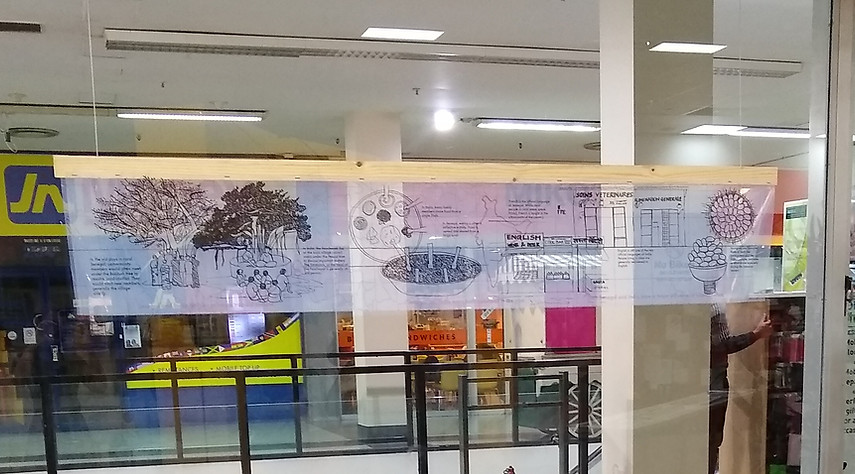Make a Wish : Thinking & Drawing Workshop
December 18, 2016
Old Manor Park Library, Rabbits Road Institute
Make a Wish : Thinking & Drawing Workshop
December 18, 2016
Old Manor Park Library, Rabbits Road Institute
Make a Wish : Thinking & Drawing Workshop
December 18, 2016
Old Manor Park Library, Rabbits Road Institute
Make a Wish : Thinking & Drawing Workshop
December 18, 2016
Old Manor Park Library, Rabbits Road Institute
An Immersive Retelling of Ranga Siyar
December 17 - December 19, 2019
Kitaabo- The Blue City Children's Literature Festival, Jodhpur
An Immersive Retelling of Ranga Siyar
December 17 - December 19, 2019
Kitaabo- The Blue City Children's Literature Festival, Jodhpur
An Immersive Retelling of Ranga Siyar
December 17 - December 19, 2019
Kitaabo- The Blue City Children's Literature Festival, Jodhpur
An Immersive Retelling of Ranga Siyar
December 17 - December 19, 2019
Kitaabo- The Blue City Children's Literature Festival, Jodhpur
An Immersive Retelling of Ranga Siyar
December 17 - December 19, 2019
Kitaabo- The Blue City Children's Literature Festival, Jodhpur
An Immersive Retelling of Ranga Siyar
December 17 - December 19, 2019
Kitaabo- The Blue City Children's Literature Festival, Jodhpur
An Immersive Retelling of Ranga Siyar
December 17 - December 19, 2019
Kitaabo- The Blue City Children's Literature Festival, Jodhpur

In July 2016, I visited Senegal for an art and design residential programme. I visited four cities namely, Dakar, Saint Louis, Thies and Ziguinchor, learning about their local culture, arts and crafts through conversations with the local people and artisans.
My understanding of Senegal mainly came through the constant comparison I made between its culture and that of India. I was surprised to know that two countries so geographically apart, had so much in common.
SHIELDING FROM THE SCORCHING HEAT:
One of the first stories that struck me was that of the Baobab tree. In Senegal, the Baobab was a very significant tree under which, in old times, members of rural communities would meet to discuss important matters of the village. The also elected new administrative heads, who were generally the old people of the village. I was told that it is under the Baobab tree where the most important people in Senegal are buried after death.
The Panchayati Raj in India and South Asia, is the local village council, that meets under the Peepal tree. They resolve local conflict and discuss administrative matters. The Sarpanch, or the head of the Panchayat is usually a village elderly.
The uncanny resemblance of these two social practices made me think about the larger geographical and economic factors responsible for their occurrence. Both Senegal and India, lie at a similar latitude, experiencing the tropical climate and extreme heat. In such a case, the only place to conduct large public meetings is under the shade of a big tree. People in both the places came up with the same practical solutions. It reflects on the similarity of humans across the world.


THE LANGUAGE:
The streets of Senegal were full of sign boards written in French. My tour guide told me how French was the official language of Senegal and was more prevalent in cities and urban areas than villages. This reminded me of how English in India, which is one of the two official languages of the country. It is spoken more widely in cities. Both India and Senegal have been colonised in the past and spread of Colonial languages in the country are telling of the the societal division and perceptions of Colonialism.
COLLECTIVE EATING:
The similarity in this ritual made me create many more parallels between India and Senegal. At many places in Senegal, we were served food in a large bowl. We were meant to sit on the floor around the bowl and share and eat from it. While to many of my European peers this practice seemed fascinating, it was not unusual to me. In India, oftentimes, food in cooked in large quantities and meant to be eaten collectively with family members or friends from the same plate or Thali. There too, we often sit on the floor and eat. Collective eating is also a consequence of the collectivist cultures that both the countries experience- having and living with big families.




MANGOES:
Both India and Senegal boast of their mangoes. Mangos in Senegal were firm as compared to the fleshy Indian mangoes. They are grown in the months of monsoon in both countries and relished by both populations.

